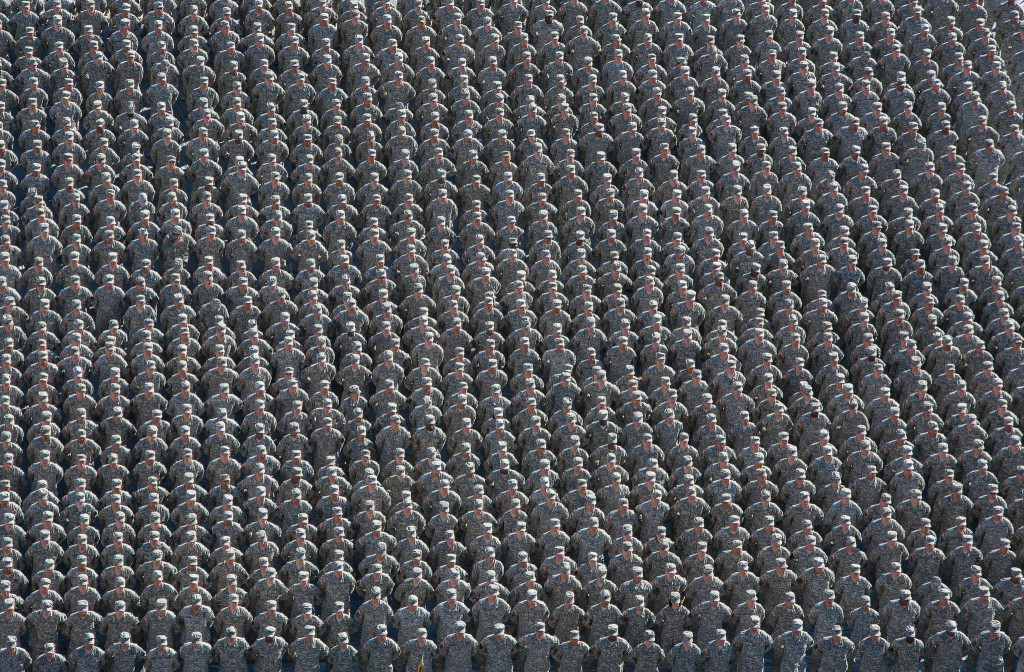The Fifth Pillar: What Next for the National Guard?

There has been a continuous running battle of words and wits over the role of the National Guard — from the director being elevated to a 4-star billet to constitutional arguments of the role of the militia and why the Guard needs attack aviation. I would, however, take the discussion a step further and argue that the National Guard is allowing its potential to be underutilized. A service component that feeds primarily off of the authorities and funding streams provided by its parent service is at the mercy of its parent’s interests, and risks minimizing its presence in the larger national security dialogue.
I don’t mean to be glib, but the Guard should not be celebrating its status as an “operational reserve.” It should instead be fighting against this co-dependency. Why? Precisely for the reason stated above. The National Guard has fundamentally different views on its method of employment, resourcing, and force structure than its parent service — as it should, frankly. This constant tension leads to continued episodes of hyperbole (the AH-64 debate just being the most recent) and internecine conflict, counter-productive in the larger Joint enterprise to which they contribute. Instead of trying to be just like the Army, or a “just in time” Army, a more economical Army, or (worst of all) a “just in case” Army, the National Guard should seize the opportunity to become an institution of equal stature.
What do I mean by that? What if, after deep introspection, the National Guard chose first to focus on those competencies and attributes that it considers essential to its institutional identity (values, ethos, tradition) and that are written into law (Titles 32 and 10, among other authorities); subsequently surveys those functions in the Army portfolio that the active force is either not well-suited for or not interested in dedicating a portion of its force structure to (e.g. Homeland Defense, DSCA, etc.); and then begins to optimize and organize to own those missions. I’m not suggesting the National Guard become a dumping ground for capabilities the active Army wants to mothball, but a singular repository of skilled, even elite forces able to bridge the gaps and seams between what have been traditional Army functions (Combined Arms Maneuver, Sustainment, etc.) By owning functions and missions and having uniquely designed and equipped forces that operate at home under Title 32 and abroad under Title 10, much of this painful discourse — “the Guard can do that too,” or “Look what Big Army is trying to do to us” — would evaporate.
I realize this may be heretical in the eyes of many guardsmen and women, but at the end of the day the question must be asked: what does the Guard want to do when it grows up? This leads me back to the co-dependent aspects of the relationship I mentioned above. A case in point: currently there is much talk of the Human Aspects of Military Operations, the Human Dimension, inter alia. What force, beyond the special operations community and civil affairs units, has such concerns built into its DNA? The National Guard. Why? The Guard is comprised principally of members that are in, among, and of the people. Civilian jobs and other connections tie them directly to the communities in which they are stationed. This has been a core element of the Guard’s identity for roughly 378 years, and it lends itself to becoming a master of that mission profile.
Clearly, rather than desperately trying to mirror the capabilities of the active component, the National Guard can and should own missions that are critical and, equally important, for which a public weary of both war and high spending is willing to pay. Not big, expensive, over-there-for-a-long-time sustained land operations, but low-signature, people-oriented stability forces designed to build partner capacity abroad and respond at home in human assistance and disaster relief crises. Let the active Army have all the Apaches they want, while the Guard builds mounted civil support brigades and develops a suite of enablers and mission command nodes with the doctrine to support it. The emerging Integrated Campaigning rubric being explored by the Army’s Capabilities and Integration Center may eventually arrive at this conclusion, but stability operations abroad and disaster response missions at home will require a much more tailored organizational structure than that of existing brigade combat teams, and it can’t come as “in lieu of“ solutions.
The National Guard should, whether it chooses to publicly or privately, pursue a course that transcends the Root Reforms. It should build towards a trained, ready force unlike any in the inventory. This will take time, but there are at least partial precedents (Italy’s Carabinieri and Australia’s Federal Police). Most importantly, the call to innovate the Joint Force is happening today. If the time is not taken to consider such a change in tack with a truly long view, the National Guard risks a return to its posture during the dark days of tiered readiness, and I don’t think anyone wants that.
Bryan Rozman is a third-generation U.S. Army Officer with 23 years of service, beginning as an enlisted man. He has served in a variety of conventional and special operations assignments from team and interagency to multinational, and 3-star level headquarters. He currently is an Army strategist in the Department of the Army’s G-3/5. The views expressed here are his own and do not reflect those of the Army, the Department of Defense, or the U.S. Government.
Photo credit: The National Guard

